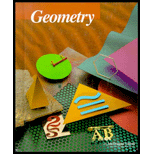
a.
To find: Whether a vertex is even or odd.
a.
Answer to Problem 4E
The vertex is even.
Explanation of Solution
The vertex will be even because as it is given in the problem that the vertex is not start or end of the journey via network then it is necessary pass it in another way, if it is coming in one way.

b.
To find: Whether both the vertices are even or odd.
b.
Answer to Problem 4E
Yes.
Explanation of Solution
Both the vertices can be even or odd but it should be kept in mind either both the vertices will be even or both the vertices will be odd. Therefore, there can be two cases related to it.
Case I:- If vertices have same start and end points then both the vertices will be even.
Case II:-If vertices have different start and end points then both the vertices will be odd.
c.
To find: Whether only one of the start and finish vertices can be odd or not.
c.
Answer to Problem 4E
No
Explanation of Solution
Only one of the start and finish vertices cannot be odd. This is because of the other vertex which is even. As that vertex is even, it is made to enter then it have to leave also. This makes it sure that other vertex should be neither start nor the end point.
Chapter 9 Solutions
McDougal Littell Jurgensen Geometry: Student Edition Geometry
Additional Math Textbook Solutions
A First Course in Probability (10th Edition)
University Calculus: Early Transcendentals (4th Edition)
Elementary Statistics
A Problem Solving Approach To Mathematics For Elementary School Teachers (13th Edition)
Elementary Statistics: Picturing the World (7th Edition)
 Elementary Geometry For College Students, 7eGeometryISBN:9781337614085Author:Alexander, Daniel C.; Koeberlein, Geralyn M.Publisher:Cengage,
Elementary Geometry For College Students, 7eGeometryISBN:9781337614085Author:Alexander, Daniel C.; Koeberlein, Geralyn M.Publisher:Cengage, Elementary Geometry for College StudentsGeometryISBN:9781285195698Author:Daniel C. Alexander, Geralyn M. KoeberleinPublisher:Cengage Learning
Elementary Geometry for College StudentsGeometryISBN:9781285195698Author:Daniel C. Alexander, Geralyn M. KoeberleinPublisher:Cengage Learning

